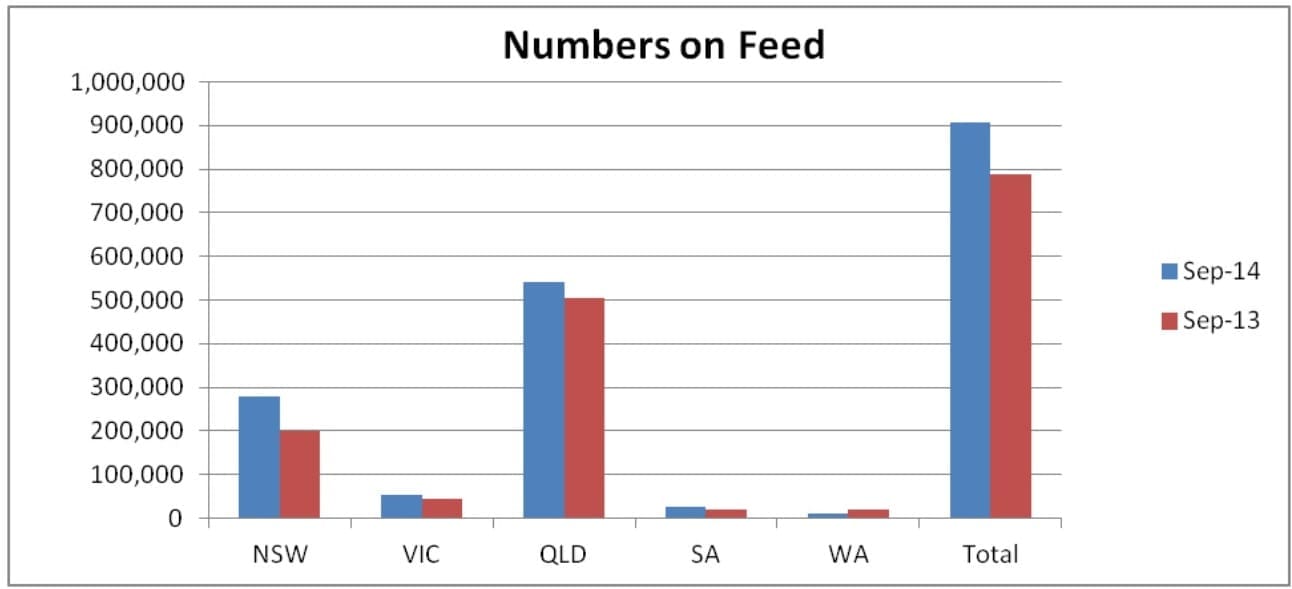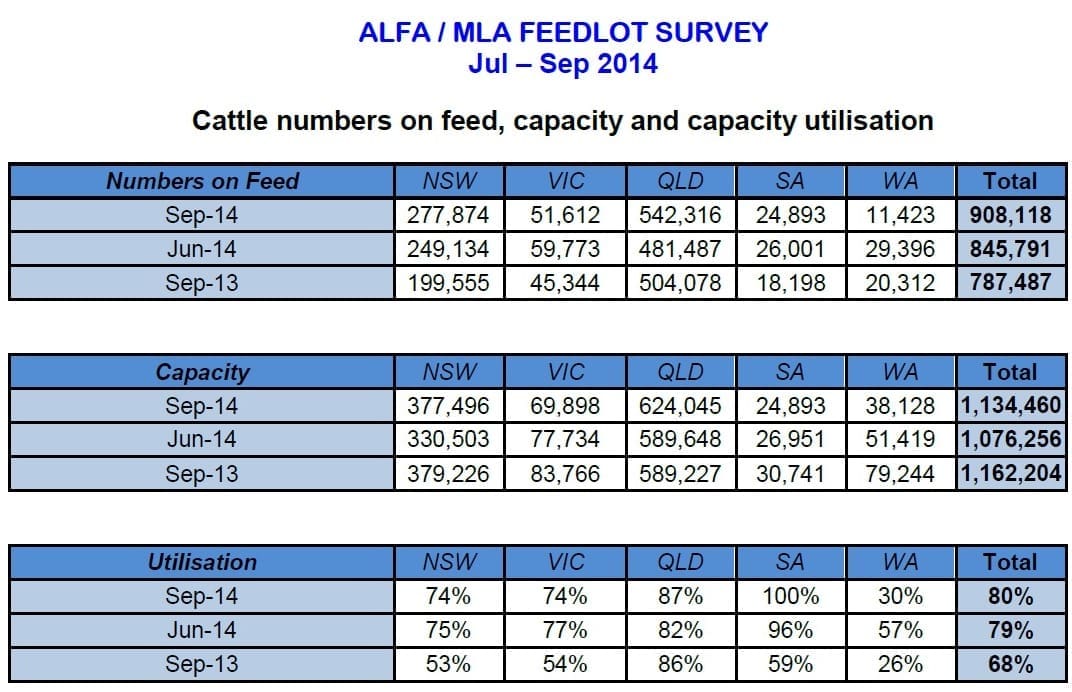CATTLE numbers on feed across Australia rose sharply during the September quarter, reaching 908,000 head, the highest figure seen since late 2006.
The seven percent rise in numbers reported since the June quarter reflects the further encroachment of drought across Eastern Australia; high international demand for grainfed beef; and more favourable feeding profitability, as reflected in Beef Central’s regular 100-day breakeven report.
It was only the third time in the history of Australian lotfeeding that more than 900,000 cattle on feed was reported in the industry’s quarterly survey. This time last year, numbers on feed were still at 787,000 head, a 16pc rise since.

At 80pc, utilisation of feedlot capacity across Australia at September 30 was also the highest seen since the same 2006 period.
Driving the big spike in numbers was a very large 12.7pc rise in numbers in Queensland, the largest lotfeeding state, where numbers on feed reached 542,000 head by the end of September.
Numbers in NSW rose 8pc on June to 173,000 head, while Victoria was marginally higher at 29,000 head. South Australia was up about 10pc to 22,700 head, while Western Australia was the only outlier, with numbers declining 50pc, seasonally, since June to 11,300 head.
Numbers in all size categories were up substantially on this time last year with clear evidence of smaller ‘opportunity’ feedlots beginning to re-activate, after lengthy periods in suspension. Across Australia, feedlots 500-1000 head in size almost doubled in numbers in September, compared with the same time last year, to 34,000 head. The smallest feedlots less than 500 head capacity rose 20pc in activity.
Lots 1000-9999 head were also up 20pc numbers to 340,000 head, while the largest category for +10,000 head feedlots were up 10pc to 513,000 head.
Australian Lot Feeders Association president Don Mackay said the result reflected the ongoing dry conditions which made it difficult for grassfed cattle operators to sustain numbers, as well as strong demand for Australian beef overseas.
“The fact that the big increase in feedlot cattle numbers was driven by Queensland and NSW was hardly surprising, given the lack of rain in these states, along with their respective importance to overall industry capacity,” Mr Mackay said.
Darling Downs wheat averaged $320/tonne over the quarter, up 4pc year-on-year, but down 12pc on where it sat in the June quarter, while Darling Downs sorghum eased 6pc year-on-year and 9pc on the June quarter, at $284/t.
Yearling steers (330-400kg) trended dearer for the quarter, up 8pc year-on-year, averaging 193¢/kg nationally.
Strong export demand was reflected in grainfed beef export figures, with an increase to 59,600t, up 11pc on the June quarter and 9pc year-on-year, taking the year-to-September volume to 166,000t, up 10pc on the same period last year.
Meat & Livestock Australia’s senior market analyst, Ben Thomas, said quarterly grainfed beef exports to Japan and Korea increased 16pc and 25pc from the corresponding period last year, at 34,500t and 9700t respectively.
While September quarter grainfed beef exports to China declined 72pc year-on-year to 1635t, exports to the EU and US increased 31pc and 143pc year-on-year.

- Click here to access all tables and graphs for September quarter feedlot survey.



HAVE YOUR SAY